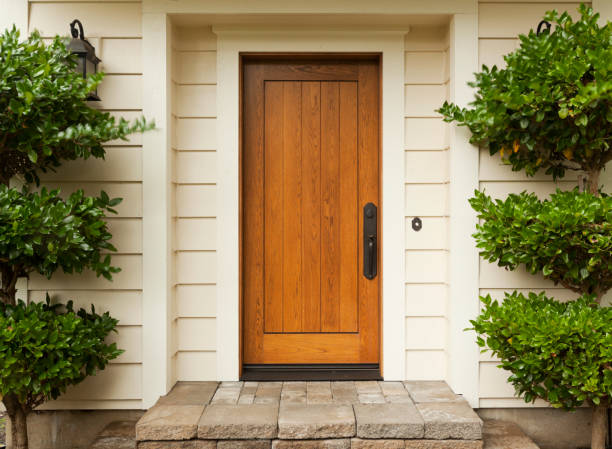Introduction
Every home has entryways that serve as both a welcome point and a protective barrier. One of the most overlooked yet vital parts of any entrance is the exterior door threshold. This small but essential component not only provides a smooth transition between spaces but also ensures protection from weather, drafts, and pests. Despite its importance, many homeowners underestimate the role thresholds play in overall comfort and energy efficiency.
Understanding how exterior door thresholds work, the types available, and the best practices for installation can significantly improve the durability and functionality of your home. In this comprehensive guide, we will explore their history, materials, benefits, and modern innovations while offering tips for choosing the perfect option for your doors.
1. What Is an Exterior Door Threshold?
An exterior door threshold is the strip of material installed at the base of a doorway. It serves as the transition point between the interior flooring and the outdoor surface. More importantly, it creates a seal that helps block air, water, dirt, and insects from entering your home.
Thresholds are usually made from materials such as wood, aluminum, or composite blends, and each offers unique benefits. Their role in enhancing energy efficiency makes them a crucial detail in any well-designed entryway.
2. Why Exterior Door Thresholds Are Important
2.1 Protection from the Elements
Thresholds act as the first line of defense against rain, snow, and wind. Without them, water could easily seep indoors.
2.2 Energy Efficiency
By sealing the gap beneath doors, thresholds help maintain indoor temperatures. This reduces the workload on heating and cooling systems, ultimately lowering energy bills.
2.3 Pest Control
Insects and rodents often attempt to sneak indoors through tiny openings. A properly installed threshold blocks these entry points.
2.4 Safety and Accessibility
They ensure a smooth transition from outside to inside, preventing tripping hazards and making entrances accessible to everyone.
3. Types of Exterior Door Thresholds
There are several types of thresholds, each designed for specific conditions:
- Wooden Thresholds: Classic in appearance but require maintenance to prevent rot.
- Aluminum Thresholds: Durable, lightweight, and resistant to corrosion.
- Vinyl or Composite Thresholds: Affordable and resistant to moisture.
- Adjustable Thresholds: Allow homeowners to raise or lower the strip to achieve a snug fit.
- ADA-Compliant Thresholds: Designed for accessibility while meeting building regulations.
4. Materials Used in Exterior Door Thresholds
4.1 Wood
Offers a warm, traditional look but may warp over time.
4.2 Metal (Aluminum or Brass)
Strong, durable, and ideal for heavy-traffic areas.
4.3 Composite Materials
Combine wood fibers and plastic for strength and moisture resistance.
4.4 Rubber and Vinyl Inserts
Often paired with metal bases for added sealing power.
5. How to Choose the Right Threshold
When selecting a threshold, consider:
- Climate: Wet or snowy areas benefit from metal or composite materials.
- Door Type: Entry doors, patio sliders, and double doors may require different designs.
- Energy Needs: Look for thresholds with weatherstripping for better insulation.
- Accessibility: ADA thresholds may be necessary for wheelchair access.
6. Installation of Exterior Door Thresholds
6.1 Tools and Materials Needed
- Measuring tape
- Saw
- Drill
- Screws
- Caulk or sealant
6.2 Step-by-Step Process
- Remove the old threshold carefully.
- Clean and prepare the surface.
- Cut the new threshold to size.
- Apply caulk along the edges.
- Secure with screws.
- Test the door for proper sealing.
7. Common Problems and Solutions
- Drafts: Add weatherstripping or adjust the threshold height.
- Water Leaks: Ensure proper caulking and drainage slope.
- Warping: Replace with moisture-resistant materials.
- Noise Issues: Rubber seals can reduce sound transfer.
8. Maintenance Tips
- Inspect regularly for gaps and wear.
- Clean dirt and debris to prevent obstruction.
- Reapply caulking every few years.
- Replace weatherstripping when worn out.
9. Innovations in Exterior Door Thresholds
Modern thresholds now include:
- Smart Weatherstripping: Self-adjusting seals.
- Energy Star Certified Models: Better insulation performance.
- Composite Upgrades: Longer-lasting and low-maintenance options.
10. Cost of Exterior Door Thresholds
Prices vary depending on material and design:
- Wooden: $15–$40
- Aluminum: $20–$60
- Composite: $25–$70
- Adjustable models: $40–$100
Professional installation may add $75–$200 depending on labor.
11. Best Practices When Buying Exterior Door Thresholds
- Measure carefully before purchasing.
- Match the threshold color and style with your door frame.
- Consider durability over aesthetics in high-traffic areas.
- Read product reviews to ensure quality.
12. External Resources for Homeowners
For additional guidance, you can refer to:
13. FAQs About Exterior Door Thresholds
Q1: How often should thresholds be replaced?
A: On average, every 5–10 years depending on material and exposure.
Q2: Can I install a threshold myself?
A: Yes, most homeowners can install one with basic tools, though professional help ensures a better seal.
Q3: Are adjustable thresholds worth it?
A: Absolutely, since they provide flexibility in sealing gaps caused by seasonal shifts.
Q4: Do thresholds work with storm doors?
A: Yes, but measurements should account for both doors to prevent misalignment.
Q5: What is the best material for humid climates?
A: Composite and aluminum thresholds perform best in areas with high humidity.

